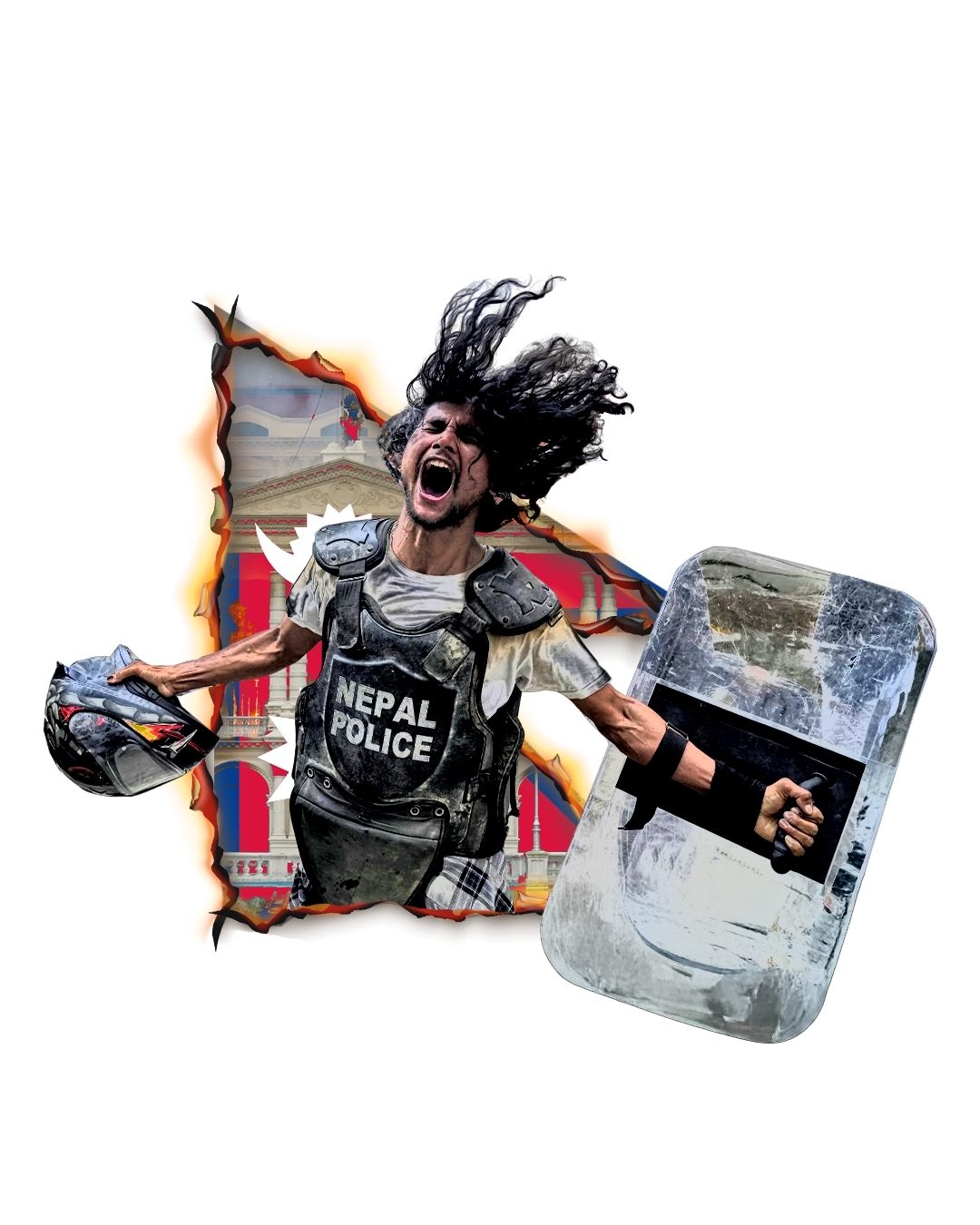What saved the nation-state from immediate collapse and ruin was the extraordinary ease with which the national will could be manipulated and imposed upon whenever someone was willing to take the burden or the glory of dictatorship upon himself.
Arendt’s retrospective insight doesn’t merely expose the tension between democracy and dictatorship, it compels us to relearn something deeper from the French Revolution: that modern revolutions are marked not only by upheaval but by repetition. The patterns inherited from the past resurface, often in distorted, postmodern forms. And what Arendt reconciles with? A reconciliation that feels even more urgent today, is not the moral binary between democracy and dictatorship, but the uncomfortable reality that modern democracy may require the figure of the Strong Master to function, or at least to appear functional.
If we set aside the endless speculation about who orchestrated Nepal’s recent youth revolt? Who was behind it? who pulled the strings? What remains is the raw spontaneity and eruption of violence that tells a deeper structural narrative. It wasn’t just a revolt against tyranny, but perhaps against the lack of true tyranny in the postmodern sense. In other words, the tyrants weren’t tyrannical enough.
Two key points emerge from this: First, Nepal’s rulers lacked the concentrated power necessary to resist the resistance. Power is only power when it overcomes resistance, when it asserts itself as incontestable. But the ruling class in Nepal was fractured by internal conflicts and lacked unified class interests. More importantly, they held no significant leverage in global economic negotiations. They weren’t just weak dictators, they weren’t even real dictators in the contemporary geopolitical sense.
Second, the revolt was driven not only by familiar grievances like unemployment, corruption, inequality, but also by an unspoken, unarticulated desire. The longing for a Strong Master, someone who can express or at least perform the collective will. In today’s world, many “dictators” emerging from democratic contexts are less about brute authoritarianism and more about symbolic coherence. They give form and language to diffuse desires. They perform authority.
In this way, the youth revolt in Nepal looked less like a revolution and more like a carnival. A public festival of repressed anxieties. But the anxiety wasn't only among the protestors. It was also a reflection of democracy’s most prohibited question: After chaos, then what? Who will sanctify this violence? Who will wield the ultimate authority? This question continues to haunt Nepal. The protestors chant one leader’s name today, another’s tomorrow. There is no unified figure, no central symbol. Just a void.
“Meanwhile, Indian liberals often ask: if unemployment, corruption, and inequality are just as rampant in India, why isn’t there a youth-led revolution here?”
The answer lies in Arendt’s original insight. India’s democracy, under the pressures of global economic competition, has found its performative dictator. Even if he is not an absolute ruler, he performs the role of the Strong Master and has the significant institutional space and national resources to sustain this performance. The desire for mastery is therefore, in some sense, satisfied. The anxiety is not eliminated, but it is not absolute. The fear of “who comes after him” is more concrete, more real because there is a “him.”
This Master isn’t expected to fulfill every promise. His failures are anticipated, even accepted. What matters is that he holds the place, embodies the symbolic role. This desire runs particularly deep in the Hindu urban upper-caste consciousness. These families, despite material privilege, carry a quiet awareness of lack. Not physical lack, but symbolic: a lost sense of natural authority. They know, somewhere deep down, that they no longer command. That the supremacy they once assumed is no longer guaranteed. That they no longer have it, that ineffable authority, that unshakable sense of self and superiority.
This lack has settled into the collective psyche, forming a kind of unconscious, one that spans not just Indian cities but the global Hindu diaspora. The tradition exported is not just ritual or religion, but a deeply internalized sense of absence. And it is this void that makes figures like Trump attractive: not for their policies, but for their performance of authority. They fill the symbolic gap.
Nepal today sits on the edge of this same symbolic terrain. A drift in the ruins of broken democratic promises, haunted by the ghost of authority, and unable to imagine a future beyond repeated revolt. Its youth are not directionless; they are, in fact, too aware of their directionlessness. And in that awareness lies both their tragedy and perhaps, their only hope.

